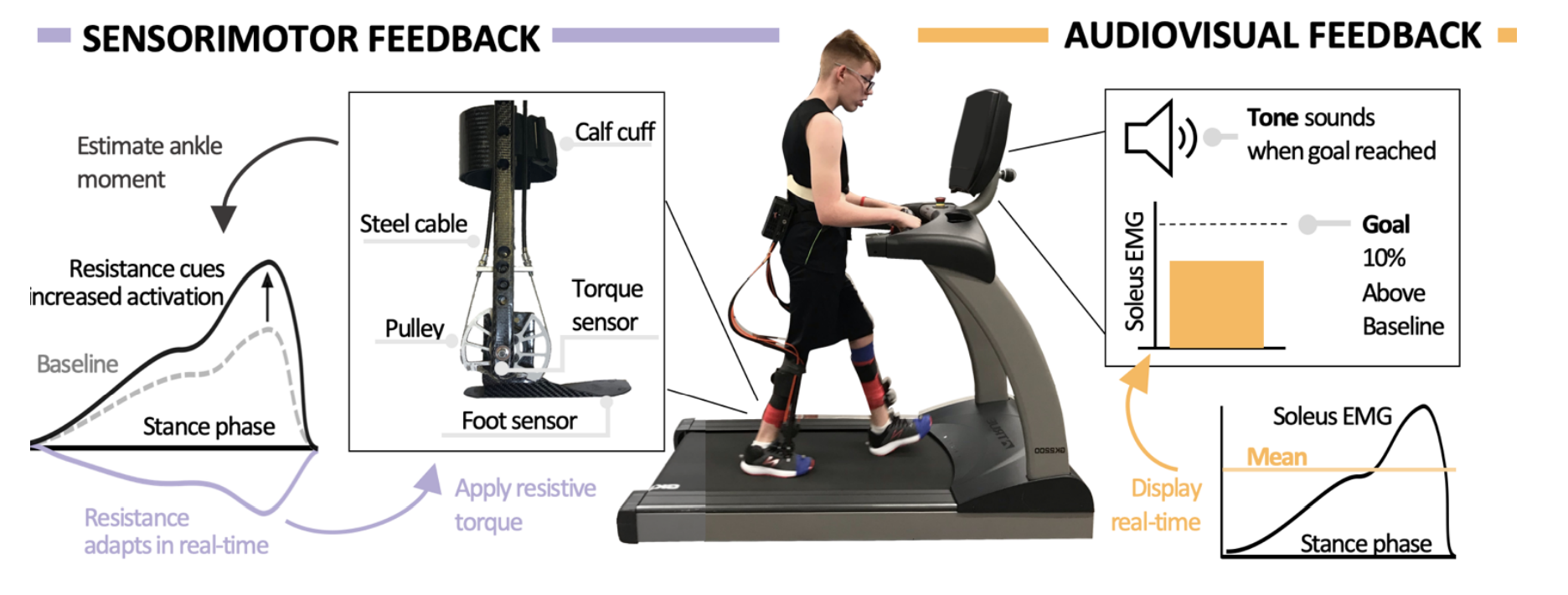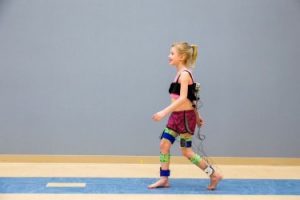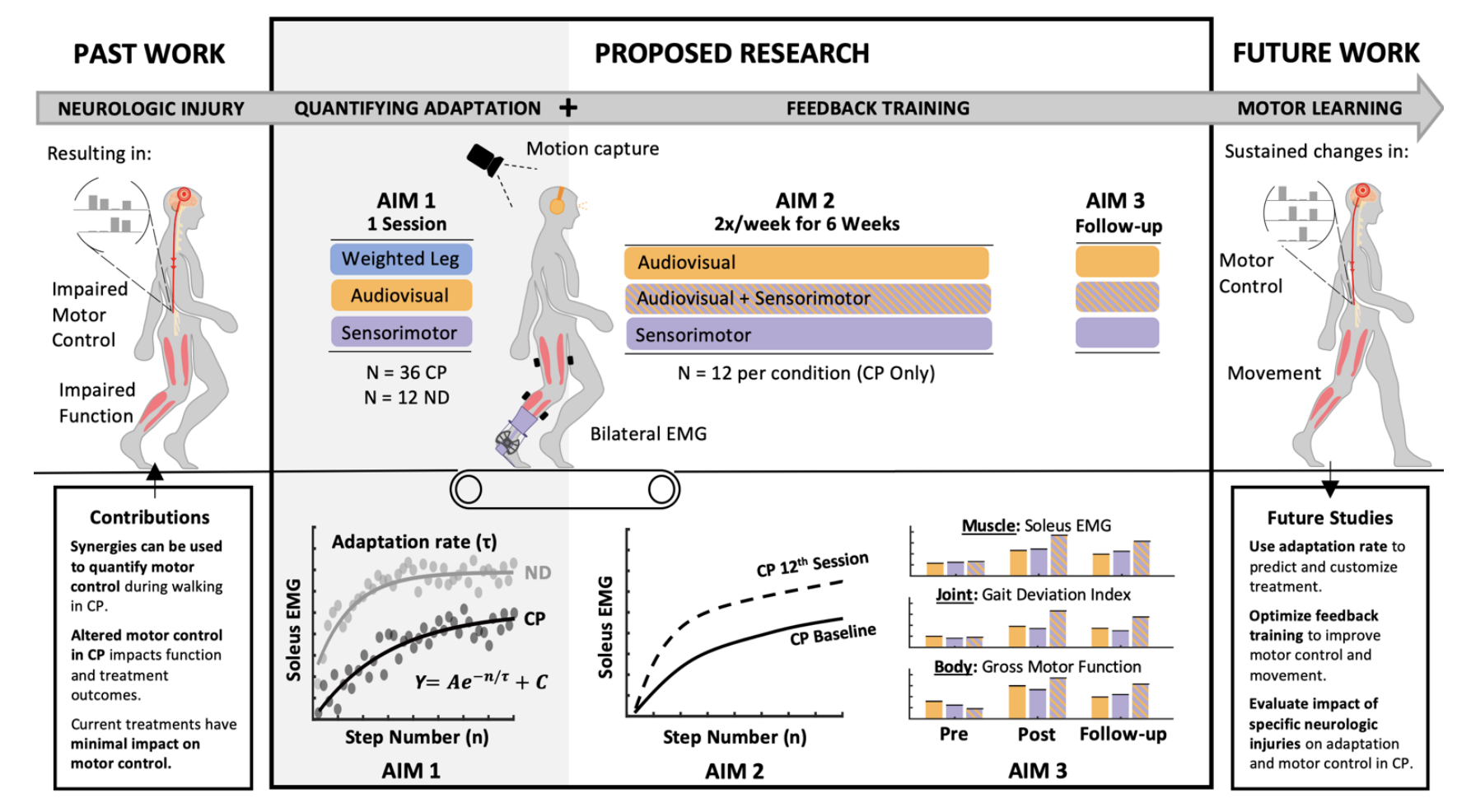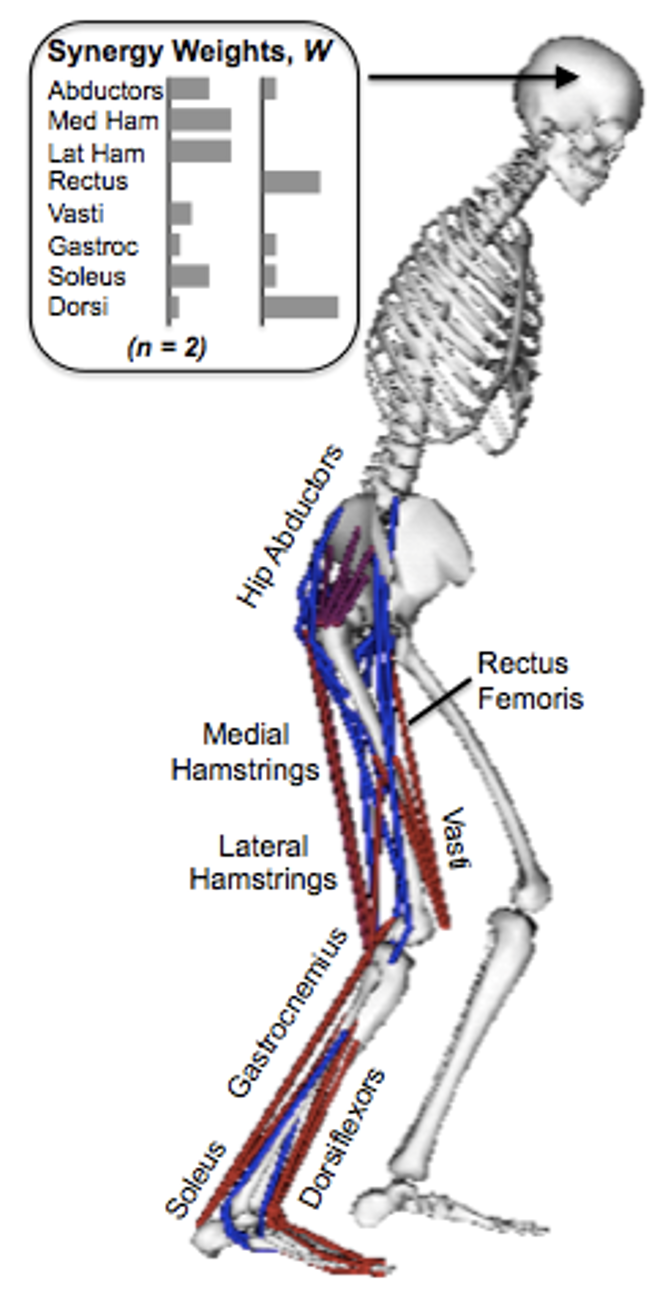Every brain injury is unique. This fact makes the evaluation, treatment, and support of individuals with neurologic injuries a complex and highly personalized challenge. In this research we seek to identify the individualized factors that can be used to predict and optimize function for individuals with neurologic injuries. Specifically, we focus on understanding individual differences in neural control and motor learning that can inform the evaluation and treatment of individuals with cerebral palsy.
Quantifying adaptation and motor learning (2022-)
The central premise of this research is that the brain injury that occurs in cerebral palsy not only impacts motor control and movement patterns, but also impacts the processes by which an individual learns new movement patterns. Understanding these processes is critical to support and design effective, evidence-based treatment options for individuals with cerebral palsy.
In the second phase of our NIH NINDS R01 research, we are focused on developing the tools to quantify individual differences in motor learning and evaluate their impact on novel rehabilitation paradigms that use sensorimotor and audiovisual biofeedback to improve walking function.
In partnership with Gillette Children’s Specialty Healthcare and the Biomechatronics Lab at Northern Arizona University, we are developing tools to quantify motor adaptation and evaluating motor adaptation and learning with biofeedback training. Specifically, we are using a split-belt treadmill paradigm to evaluate motor adaptation during walking compared to nondisabled peers, as well as adaptation to two interventions designed to target ankle plantarflexor function during walking – the Biomotum Spark exoskeleton to provide resistive sensorimotor feedback and real-time audiovisual feedback based on plantarlexor muscle activity. We hypothesize that adapation is altered in cerebral palsy relative to nondisabled peers, and that individual motor adaptation strategies are related to responses to biofeedback training.

Quantifying individual differences in motor control (2015-2022)
In collaboration with Gillette Children’s Specialty Healthcare, we launched this initiative under the premise that our current tools for evaluating movement and motor control were insufficient and hindering treatment decision making for children with cerebral palsy. While clinical gait analysis has been used for nearly three decades at Gillette, these tools are very good at describing a child’s movement patterns – kinematics and kinetics – but struggle to identify the underlying neuromuscular factors that cause those movement patterns. Cerebral palsy is caused by an injury to the brain near the time of birth, but understanding how each individual controls their and the impact of treatments on their control strategy were largely unknown.
In this research, we used non-invasive, widely-available clinical tools in gait analysis to quantify patient-specific changes in neuromuscular control in children with cerebral palsy. We sought to empower clinicians with patient-specific measures of altered control that could be used to understand an individual’s movement pattern and guide treatment planning. By integrating clinical gait analysis, synergy analysis from neuroscience, and dynamic musculoskeletal simulations we demonstrated that children with CP use simplified motor control strategies relative to nondisabled peers and that control complexity is related to walking function. We further demonstrated that current treatments – including botulinum toxin injections, selective dorsal rhizotomy, orthotics, and orthopedic surgery – do not impact motor control. While some of these treatments can alter musculoskeletal function, they do not alter or address an individual’s underlying motor control strategy. This gap has motivated our current work to understand how the processes of motor learning are altered in cerebral palsy and to identify new treatment strategies – such as neuromodulation and biofeedback training – that can directly target and improve motor control.
Acknowledgements
Our team thanks the families who have volunteered their time to support this research. We also thank the staff at Gillette Children’s Specialty Healthcare, including Andy Ries, Alyssa Spomer, Meghan Munger, Elizabeth Nelson, Stacy Ngwesse, Marissa Thill, and Alexander Hornung for their support.
Funding
This material is based upon work supported by the National Institutes of Health, National Institute of Neurological Disorders and Stroke under Grant Number R01NS091056. Any opinions, findings, and conclusions or recommendations expressed in this material are those of the author(s) and do not necessarily reflect the views of the National Institutes of Health.
- NIH – NINDS: Quantifying patient-specific changes in neuromuscular control in cerebral palsy



